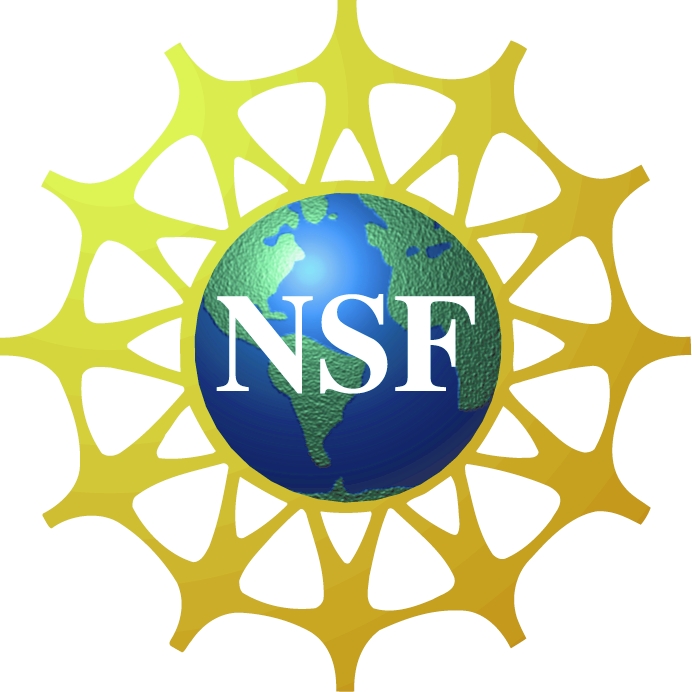Difference between revisions of "Main Page"
| Line 1: | Line 1: | ||
<big>'''Geospace Environment Modeling (GEM)'''</big> [[Image:NSF_Logo_color.jpg|100 px]] | <big>'''Geospace Environment Modeling (GEM)'''</big> [[Image:NSF_Logo_color.jpg|100 px]] | ||
| − | |||
| − | |||
Geospace Environment Modeling (GEM) is a broad-based, community-initiated research program on the physics of the Earth's magnetosphere and the coupling of the magnetosphere to the atmosphere and to the solar wind. The purpose of the GEM program is to support basic research into the dynamical and structural properties of geospace, leading to the construction of a global Geospace General Circulation Model (GGCM) with predictive capability. This GGCM model will be modularized and will complement parallel developments of magnetohydrodynamic models. The strategy for achieving GEM goals is to undertake a series of focus groups and challenge campaigns, in both theory and observational modes, each focusing on particular aspects of the geospace environment. | Geospace Environment Modeling (GEM) is a broad-based, community-initiated research program on the physics of the Earth's magnetosphere and the coupling of the magnetosphere to the atmosphere and to the solar wind. The purpose of the GEM program is to support basic research into the dynamical and structural properties of geospace, leading to the construction of a global Geospace General Circulation Model (GGCM) with predictive capability. This GGCM model will be modularized and will complement parallel developments of magnetohydrodynamic models. The strategy for achieving GEM goals is to undertake a series of focus groups and challenge campaigns, in both theory and observational modes, each focusing on particular aspects of the geospace environment. | ||
Revision as of 07:59, 29 April 2022
Geospace Environment Modeling (GEM) 
Geospace Environment Modeling (GEM) is a broad-based, community-initiated research program on the physics of the Earth's magnetosphere and the coupling of the magnetosphere to the atmosphere and to the solar wind. The purpose of the GEM program is to support basic research into the dynamical and structural properties of geospace, leading to the construction of a global Geospace General Circulation Model (GGCM) with predictive capability. This GGCM model will be modularized and will complement parallel developments of magnetohydrodynamic models. The strategy for achieving GEM goals is to undertake a series of focus groups and challenge campaigns, in both theory and observational modes, each focusing on particular aspects of the geospace environment.
The Geospace Environment Modeling (GEM) program is sponsored by National Science Foundation (NSF) Division of Atmospheric and Geospace Sciences.
Contents
New to GEM? Get the Newsletter and Follow the Chair’s Chat Blog!
Want to stay informed about GEM activities? Sign up for announcements through the GEM Messenger - more information here and follow the GEM Chair Blog.
What's New
- We are proceeding with the organization of the 2022 GEM summer workshop. The GEM meeting will be during June 19 – 24, 2022, at Alohilani Resort Waikiki Beach Hotel, Honolulu, and SHINE will hold a meeting at the same venue on the following week. There will be a joint GEM-SHINE meeting in between the two summer workshops. Detailed information is available at the GEM workshop website and on Slack. The Early Bird registration ends on May 15, 2022, at midnight Central Time.
- The GEM Steering Committee has selected three new Focus Groups starting in 2022: (i) Understanding the causes of geomagnetic disturbances in geospace for hazard analysis on geomagnetically induced currents (Lead: Xueling Shi); (ii) Magnetospheric Sources of Particle Precipitation and Their Role on Electrodynamic Coupling of Magnetosphere-Ionosphere-Thermosphere Systems (Lead: Dogacan Su Ozturk); and (iii) The Nightside Transition Region (Lead: Bea Gallardo-Lacourt).
- The GEM community has published the annual GEMstone Newsletter for 2021. Inside you can read reports detailing GEM activities over the past year as well as submissions from our liaison representatives highlighting latest news from US agencies and international partners.
GEM Community Knowledge Base
The science component of the GEM Workshops are led by a volunteer Steering Committee. To promote transparency and provide an informal guide to existing, new, and future members of the Steering Committee, a document of GEM Steering Committee Best Practices was developed. This document, updated in October 2019, is available here.
The hallmark of GEM workshops is its community-led workshop-style sessions, carried out through focus groups. Interested in applying to run a focus group and are not sure how to do it? Are you currently running a focus group and need ideas for how to achieve the workshop-style in your focus groups? Advice from previous focus group leaders on proposing and running a focus group, updated in October 2019, is available here.
Anti-Harassment Policy for GEM Meetings and Activities
GEM is committed to ensuring that all participants in all GEM activities have an environment that is free from harassment. This policy applies to all attendees at GEM activities including scientists, students, guests, staff, and contractors participating in scientific sessions, auxiliary meetings, and social events associated with any GEM gathering or other activity. See the GEM Anti-Harassment Policy, NSF Sexual Harassment for Conferences, and NSF Conference Workshop Symposium Participant Notice for details.
Commitment to Diversity, Equity and Inclusion in the GEM Community
GEM stands with the numerous professional and academic societies around the world that have pledged to support diversity, equity and inclusion, and commits to listen, advocate, and break down barriers for persons of color. We acknowledge that deep biases and inequities exist that prevent the full participation of people of color in our own scientific community. The GEM Steering Committee and leadership commit to being intentionally and actively anti-racist through education and best practices. Please see the GEM Inclusion Statement for further details.
Acknowledgment and Disclaimer
Any opinions, findings and conclusions or recommendations expressed at this website are those of the authors and do not necessarily reflect the views of the National Science Foundation (NSF). Comments about this website can be e-mailed to geospace.environment.modeling [at] gmail.com.